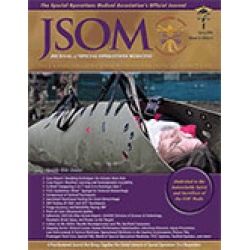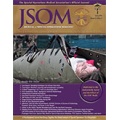Preliminary Comparison of New and Established Tactical Tourniquets in a Manikin Hemorrhage Model
Gibson R, Housler GJ, Rush SC, Aden JK, Kragh JF, Dubick MA 16(1). 29 - 35 (Journal Article)
Background: Emergency tourniquet use has been associated with hemorrhage control and improved survival during the wars since 2001. The purpose of the present study is to compare the differential performance of two new tactical tourniquets with the standard-issue tourniquet to provide preliminary evidence to guide decisions on device development. Methods: A laboratory experiment was designed to test the effectiveness of tourniquets on a manikin thigh. Three models of tourniquets were assessed. The Rapid Application Tourniquet System (RATS) and the Tactical Mechanical Tourniquet (TMT) were compared with the standard-issue Combat Application Tourniquet® (C-A-T). Two users conducted 30 tests each. Results: Percentages for effectiveness (hemorrhage control, yes/no) and distal pulse cessation did not differ significantly by model. When compared with the RATS, the C-A-T performed better (ρ < .001) for time to hemorrhage control and fluid loss. The C-A-T and TMT had comparable responses for most measures, but the C-A-T applied more pressure (ρ = .04) than did the TMT for hemorrhage control. Conclusion: All three tactical tourniquets showed substantial capacity for hemorrhage control. However, the two new tourniquet models (RATS and TMT) did not offer any improvement over the C-A-T, which is currently issued to military services. Indeed, one of the new models, the RATS, was inferior to the C-A-T in terms of speed of application and simulated loss of blood. Opportunities were detected for refinements in design of the two new tourniquets that may offer future improvements in their performance.


 Español
Español 




